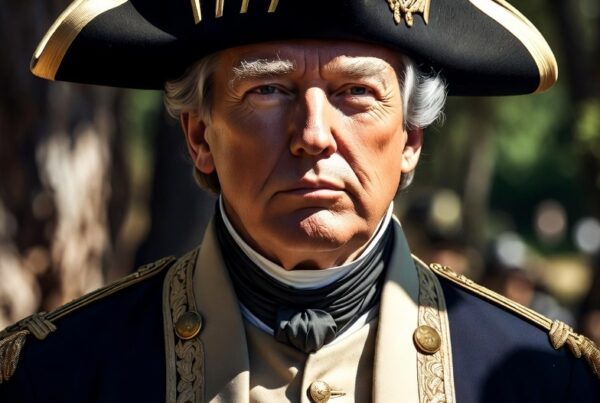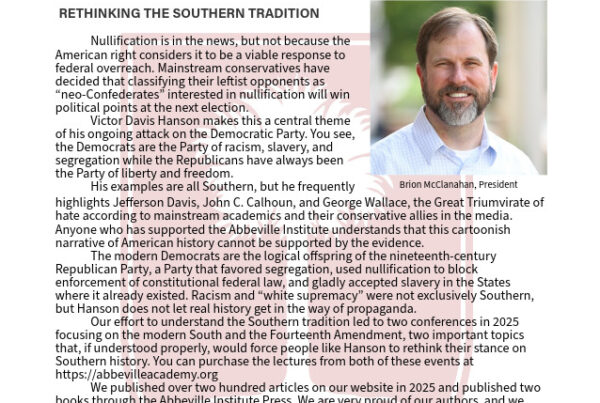
On August 22, 2018, Forbes Magazine published an article written by Kristina Killgrove entitled “Scholars Explain the Racist History of UNC’s Silent Sam Statue.” 1 Two days earlier, the statue had been pulled down by a crowd of students and activists, who saw it as a symbol of “white supremacy” that had no place on the campus of UNC Chapel Hill. Killgrove clearly sympathized with them, and took an approach that many other writers, journalists, and many activist historians also choose to take: selective recitation of quotes to support what they already believe, otherwise known as “cherry picking.” The quote they all choose, out of the thousands of words spoken when Silent Sam was dedicated in June of 1913, is a portion of the last speech of the day. The speech was given by Julian Carr, who had been a student at UNC during the Civil War. Carr enlisted in the Confederate Army in 1864, and returned to school when the war ended. He later became a major industrialist, entrepreneur and philanthropist celebrated for generously donating land and money to various North Carolina colleges and universities. Finally, he was also a benefactor of the Training School for Colored People in Augusta, Georgia.2
The portion of Carr’s speech that everyone quotes is as follows:
I trust I may be pardoned for one allusion, howbeit it is rather personal. One hundred yards from where we stand [on Franklin Street], less than ninety days perhaps after my return from Appomattox, I horse-whipped a negro wench until her skirts hung in shreds, because upon the streets of this quiet village she had publicly insulted an maligned a Southern lady, and then rushed for protection to these University buildings where was stationed a garrison of 100 Federal soldiers. I performed the pleasing duty in the immediate presence of the entire garrison, and for thirty nights afterward slept with a double-barrel shotgun under my head.
It’s an ugly story, no doubt. It’s also an anomaly when placed in context of Carr’s entire speech, and certainly when compared with all the other speeches given at the memorial’s dedication.
There were six speakers on June 2, 1913. Major Henry London, journalist, lawyer and author of a Civil War diary of his time as a UNC student during the Civil War, introduced North Carolina Governor Locke Craig. After the Governor spoke, an address was given by Mary Williams, President of the North Carolina Division of the United Daughters of the Confederacy. She was followed by London’s wife Bettie London, Chair of the Monument Committee. UNC President Francis Venable then accepted the Monument on behalf of the University, and finally the oft-quoted Julian Carr gave thanks on behalf of the student veterans. In order to give a more complete picture of the tone and theme of dedication day, it is worth briefly quoting from what each of these speakers had to say. A copy of the program can be found archived on UNC’s website. 3
In his short remarks introducing the Governor, London established the theme for the day:
As one of the students of this University who left its halls to serve as a soldier of the Confederacy, following Lee to Appomattox, I appreciate most highly this monument erected in memory of my comrades both dead and living. May it forever remain as an object lesson to teach all future generations that duty is “the sublimest word in the English language” and that the sons of this University were willing to suffer and, if need be, sacrifice their lives in their devotion to duty. We thought then we were right, and now we know it.4
The Governor continued the theme, reciting the number of dead and wounded who had left the University and gone to war, praising their patriotism:
The statue is a memorial to their chivalry and devotion. It is an epic poem in bronze. Its beauty and its grandeur are not limited by the genius of the sculptor. The soul of the beholder will determine the revelation of its meaning. It will remind you and those who come after you of the boys who left these peaceful, classic shades for the hardships of armies at the front, for the fierce carnage of titanic battles, for suffering and for death. We unveil and dedicate this monument today as a covenant that we too will do our task with fidelity and courage.5
Mary Williams was the next speaker.
Poor is the country that boasts no heroes, but beggared is that people who, having them, forget. The South has her heroes – her immortals who add glory to American history and ‘we of the South revere, and we of the South remember.’
May this shaft prove an inspiration to the students here as they come and go, and may they remember that such courage and fidelity as those ‘Boy Soldiers’ displayed made it possible for the fame of Lee, Jackson and Johnson’ to be lifted higher and higher, until they wrote their names among the stars.6
She was followed by Bettie London, who was more deeply involved in the creation of the monument than anyone else speaking that day, and whose words should therefore be given more weight in determining the intent behind this memorial:
As Chairman of the Monument Committee of the North Carolina Division of the United Daughters of the Confederacy I have the honor, and it gives me much pleasure, to present in their name to the trustees of the University of North Carolina this monument which is erected in memory of those students of this University who served in the armies of the Confederate States of America.
No man in any age or country more richly deserves to be commemmorated in bronze or stone than those youths who at the call of their respective states rushed to arms and suffered the indescribable hardships and dangers of a Confederate soldier’s life. While this monument is an outward expression of our love for them and our admiration of their heroism, yet also the loving hearts of the women of the South will ever be memorial tablets on which will be inscribed the memory of their virtues and valor. 7
University President Francis P. Venable did not depart from the themes of duty and sacrifice when he gave his remarks. In describing the ideals represented by Silent Sam, he said “It might well be entitled “The Call of Duty.””
This then is no mere monument to the dead but a worthy memorial to that heroic era in the history of the University when men’s hearts were stirred mightily and the clear call of duty was answered even at the sacrifice of life itself. It is well to remember the record of the University in the great struggle, for I believe it to be without parallel.8
And then finally, Julian Carr’s turn to speak came, and in what my surprise many who have only seen his racist anecdote printed over and over, race was not the primary focus of his remarks that day. He too focused on the memory of his former fellow soldiers.
They fought, not for conquest, not for coercion, but from a high and holy sense of duty. They were like the Knights of the Holy Grail, they served for the reward of serving, they suffered for the reward of suffering, they endured for the reward of enduring, they fought for the reward of duty done. They served, they suffered, they endured, they fought for their childhood homes, their firesides, the honor of their ancestors, their loved ones, their own native land. 9
Carr’s language is more flowery than his fellow speakers, but the reason for the monument’s existence is exactly the same: it is a memorial to courage. It is a memorial to those who fufilled their duty to home and country. It is a memorial to sacrifice.
And it must be stated here: Julian Carr is the only speaker to make racist remarks. There is not a single word on the topic of race in Major London’s introduction or his wife’s speech, in any of the Governor’s remarks that I have been able to find, or in the words of Mary Williams, or in Francis Venable’s acceptance. Only Julian Carr speaks about race, making his words on the subject the exception, not the rule. Why then are his words the only words quoted by modern journalists, when five other people spoke? The answer should be obvious. They are the only words which serve the agenda of the modern activist.
Maybe we live in too cynical an age to appreciate the sentiments of a century ago. Duty and honor are concepts that seem largely to have fallen by the wayside in our self-absorbed and self-righteous times. But we would do well to take the words of President Venable to heart when he called Silent Sam “a splendid lesson in granite and bronze to all coming generations of students:”
… in the words of the immortal Lee “Duty is the sublimest word in the English language.” If they learn this lesson they will not fail to emulate the virtues of the heroic sons of the University who have gone before them, and will nobly answer the call as it comes to them day by day in great things and in small.
An honest appraisal of all remarks given on the day of Silent Sam’s dedication can lead to only one conclusion: the monument was not intended as a symbol of white supremacy. It was genuinely meant to honor the students who sacrified for what they saw as their duty, and to inspire future generations by that example. That so many cannot see this is proof that Governor Locke Craig was correct when he said “the soul of the beholder will determine the revelation of it’s [Silent Sam’s] meaning.”
2. https://www.ncpedia.org/biography/carr-julian-shakespeare
3. https://exhibits.lib.unc.edu/items/show/3687
4. https://archive.org/details/aschairmanofmonu00lond/page/n5
5. https://archive.org/details/alumnireviewseriv1i6chap/page/184
6. https://exhibits.lib.unc.edu/files/original/3333889eb89e79aabbeb85298a8960db.pdf
7. https://archive.org/details/aschairmanofmonu00lond/page/n1
8. https://finding-aids.lib.unc.edu/04368/#folder_128#1
9. https://exhibits.lib.unc.edu/items/show/5519





